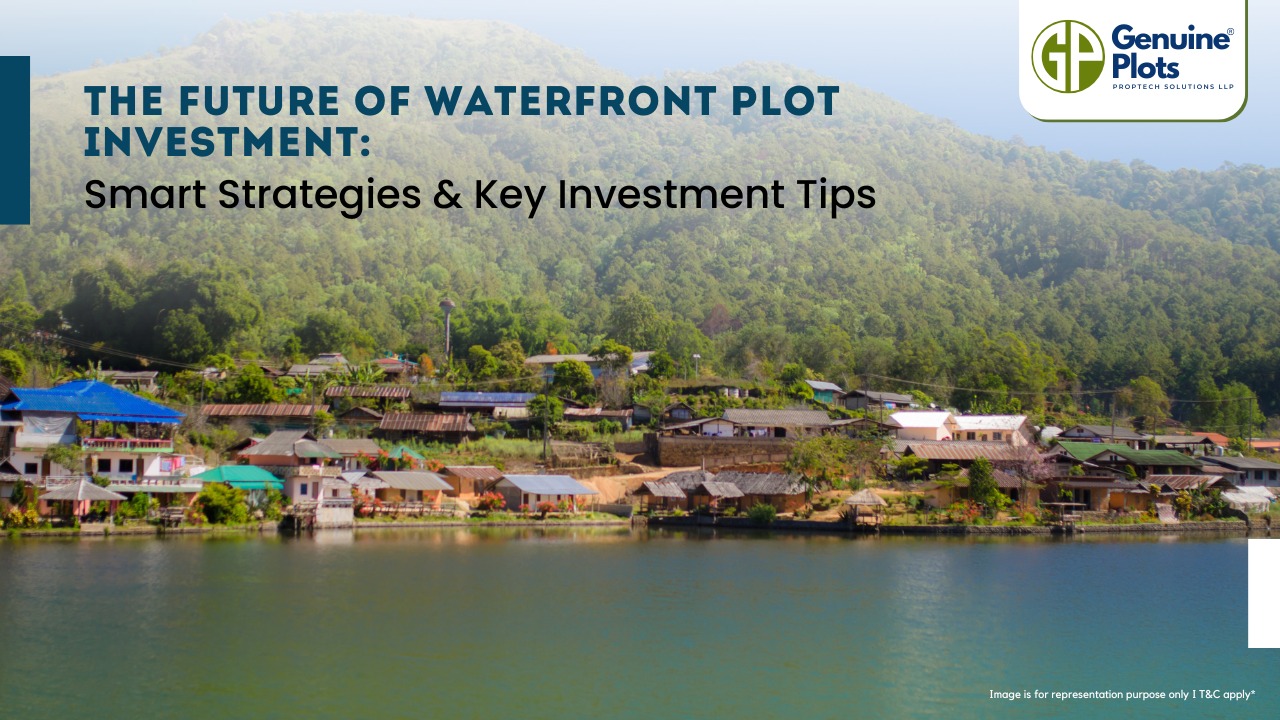Prev Post
The Lure of Dwelling on Water-Touch PlotsThe Future of Waterfront Plot Investment: Smart Strategies & Key Investment Tips
Waterfront plots have long been investors' fantasies, with their unparalleled views, lifestyle benefits, and status. But in today's changing property environment, not all waterfront homes are equal. To ensure long-term value and profitability, investors must now consider factors beyond the traditional view, including climate threats, shifting tourism trends, and new infrastructure priorities.
Why Waterfront Investments Still Shine
The future of waterfront plots will hinge on location quality, resilience to the climate, and robust infrastructure.
Early indications suggest that waterside assets in well-linked, prosperous areas outperform those in remote or underdeveloped zones. The best-performing investors are targeting tried-and-tested high-demand destinations, those with sound transport links, stable economies, and sustainable development strategies.
Investment Tip 1: Location Trumps the View
When assessing waterfront parcels, keep in mind that water itself does not promise success. The highest returns yield from parcels in urban or semi-urban centres where tourism, trade, and connectivity meet.
Parcels with good infrastructure, round-the-year tourism, and accessibility to airports or highways appreciate faster and provide higher rental yields. Remote waterfronts with little access, on the other hand, might lack liquidity and seasonal usage.
Investment Tip 2: Value Elevation & Flood Risk Evaluation
Plots of higher elevations with natural protection or engineered defences against flooding will retain worth and be more readily insured, an important benefit as regulations get stricter globally.
Investment Tip 3: Accessibility Boosts Returns
Plots that are conveniently connected to cities, transportation hubs, or well-known tourist attractions tend to perform better than those in more isolated locations. Accessibility is a significant factor for purchasers who are aiming for resale value or short-term rental income.
Investment Tip 4: Check Legal Access to the Water Body
Legal certainty can or will undo a waterfront transaction. There can be waterfront plots with view sites but lacking legal rights of access or use of the water's edge. It is essential to check if the land includes riparian or littoral rights, and if one is allowed to construct a jetty, dock, or private access route.
Hire a local real estate lawyer to examine deeds, easements, and shoreline ordinances. A waterfront without secure access may greatly restrict usage and resale value.
Investment Tip 5: Get Familiar with Community Rules & Building Restrictions
Each waterfront zone has its own special set of zoning regulations, environmental codes, and coastal development controls.
From height restrictions on buildings to setbacks and septic rules, these are details that can impact costs and the feasibility of design. Some coastal areas already have sea-level-rise zoning in effect, capping what can be constructed at the beach. Checking these guidelines upfront prevents costly redesigns and ensures permits don't languish down the line.
Investment Tip 6: Assess Amenities & Tourism Potential
Compliance with lifestyle amenities, restaurants, marinas, health care, and entertainment confers real value. Moreover, areas with increasing tourism and hospitality infrastructure tend to present valuable short-term rental opportunities through Airbnb-like websites.
However, local laws governing short-term rentals can differ significantly. To avoid violations, consider community policies, local taxes, and licensing requirements before figuring out vacation rental income.
The Upcoming Value Wave
Those who combine strategic foresight with scenic value will be the ones investing in waterfront real estate in the future. Data-driven site selection, sustainable building practices, and climate-adaptive design will distinguish successful assets from underperforming ones.
In the coming decade, investors who choose plots in resilient, amenity-rich, and economically active regions, while applying disciplined due diligence, will likely see stronger appreciation and more consistent rental yields than the broader market.







